The godfathers: legal mountain bike trails in the Rems-Murr district
Seven mountain bikers roll out of a trail in the Rems-Murr district onto a gravel path - right in front of a hunter. Elsewhere, an argument might have broken out, with phrases like "You're ruining the trails and scaring the game!". But instead, the hunter greets the mountain bikers in a relaxed manner; one of them, Lars, asks in turn: "Hello, are you the hunter here? If there's anything wrong with the trails here, please let me know."
Lars lives in the Rems-Murr district in Baden-Württemberg and can be seen in the cover picture. He is the official contact for the forestry office, the forester, the hunter, the bikers - and the twelve trail sponsors. They are the ones who maintain the trails. They smooth out braking grooves and clear drainage channels. Lars' tip for legal trails is simple: talk to each other.
This is how the legal trails in the Rems-Murr district came about
The legal trails started in 2019, when there were already some "wild" trails in the area. You need to know the so-called "2-meter rule": In Baden-Württemberg, "cycling in the forest on trails less than two meters wide is generally prohibited," explains the German Mountain Bike Initiative (DIMB) on its website. The exceptions are, of course, marked MTB paths or trails.
There is definitely a need for legal trails and a uniform legal situation throughout Germany. according to the German Alpine Association (DAV), 4.2 million people in Germany regularly ride MTBs. This is probably one of the reasons why there are always unofficial trails: Bikers use existing trails or build their own in the hope that they will be tacitly tolerated. This was also the case in the Rems-Murr district.
This was to end in 2019: an interest group (IG) of the DIMB approached the DAV. It was looking for local partners to create legal trails together with the DIMB. Lars seized the opportunity. In the months and years that followed, he consulted with the forestry office and, together with the DIMB, approached the local council, forest owners, hunters and other interest groups.
He also found twelve trail sponsors and other volunteers to build and maintain the trails as required. Together, they created legal trails with a total length of three kilometers according to DIMB guidelines - quite a lot for the district.
How do you build trails?
The sponsors proceed as follows when building trails: First, they come up with a line. They incorporate natural features such as waves, roots and rocks and see if they can avoid puddles by building the trail over the dip. If this is not possible, or if the line through the depression is simply more fun, the sponsors simply create a drainage system: Fine gravel forms the bottom layer in the hollow, with coarser stones in the middle and finally light soil as the final and top layer.
"This allows the water to seep through," says Chris Laue, one of the trail sponsors. To get a better idea of the future trail, the trail sponsors then rake the path and cut it clear. Then it's time to test ride and make any necessary corrections.
As soon as the trail has been broken in, they combine natural materials such as sand, earth and stones to create berms, jumps and drainage. "That's the best and gentlest way," says Chris. "We don't shovel for nothing - it saves time and protects nature."
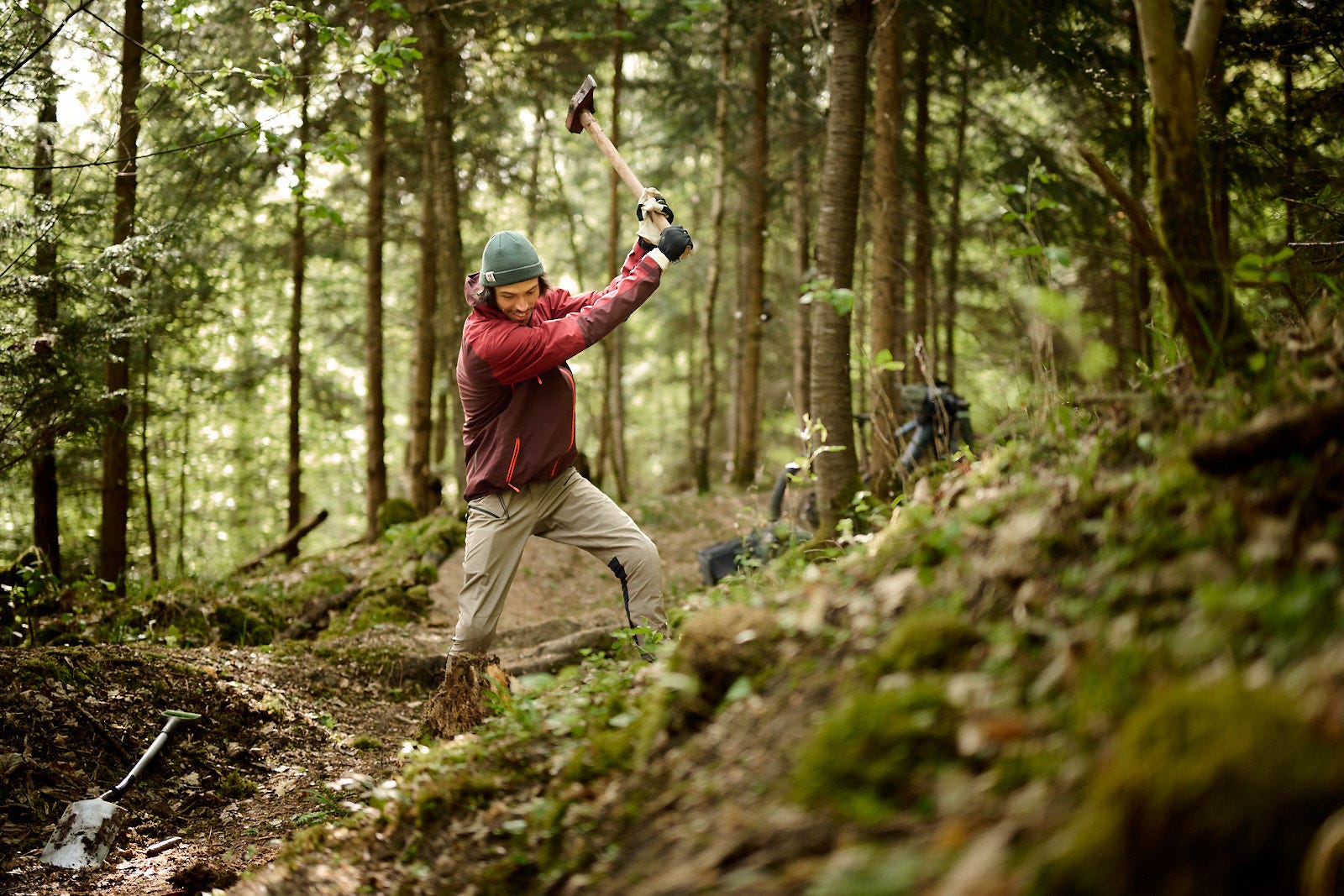

Cooperation also plays a major role here: the local authority's depot delivers gravel and soil to the hills, among other things. The trail builders then use wheelbarrows to bring the material to the trail. "It would be quicker with an excavator, but you'd ruin the whole trail," explains Lars. Finally, the trail sponsors signpost and map the trails and pass the data on to the forestry office.
It is important to them that they offer something for bikers of different levels and tastes. From flow trails to bends and jumps - everyone should have fun in the Rems-Murr district.
A trail for photos
One example of this is the trail created by Markus Zieher and Christoph Laue. Chris is a sports photographer, Markus an MTB guide and coach. Together they worked on a trail for a month. A trail that is fun for advanced riders and pros alike. A trail where everyone learns and gets better.
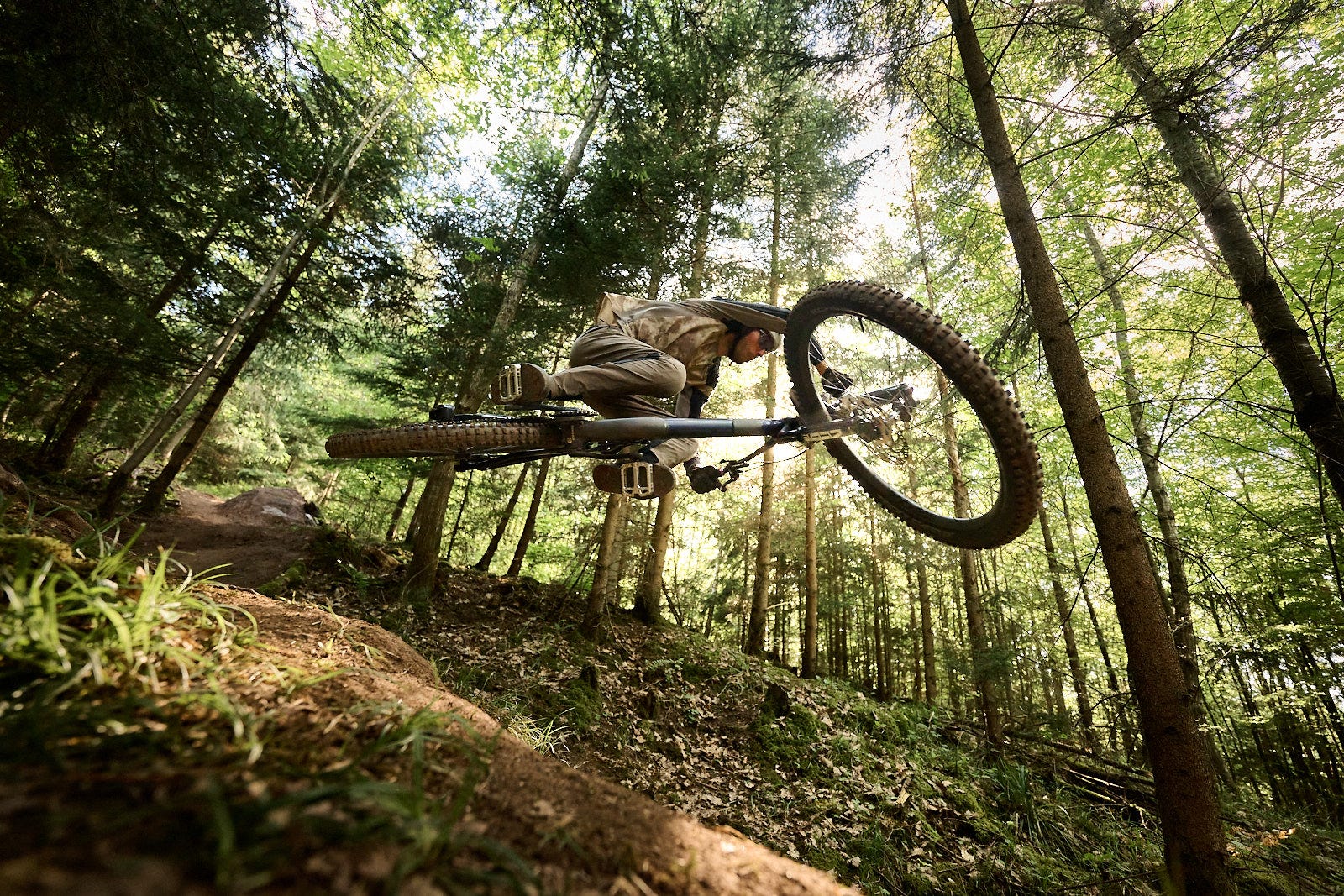

"We made sure to include lots of features," explains Chris. "Advanced riders roll through slowly and feel their way around jumps and berms. "Pros ride fast and enjoy the quick changes between the various obstacles such as bends and jumps."
This has the side effect that the trail is perfect for epic photos. As a sports photographer, Chris had an eye for photogenic jumps, while Markus perfected radii with his riding skills and knowledge.
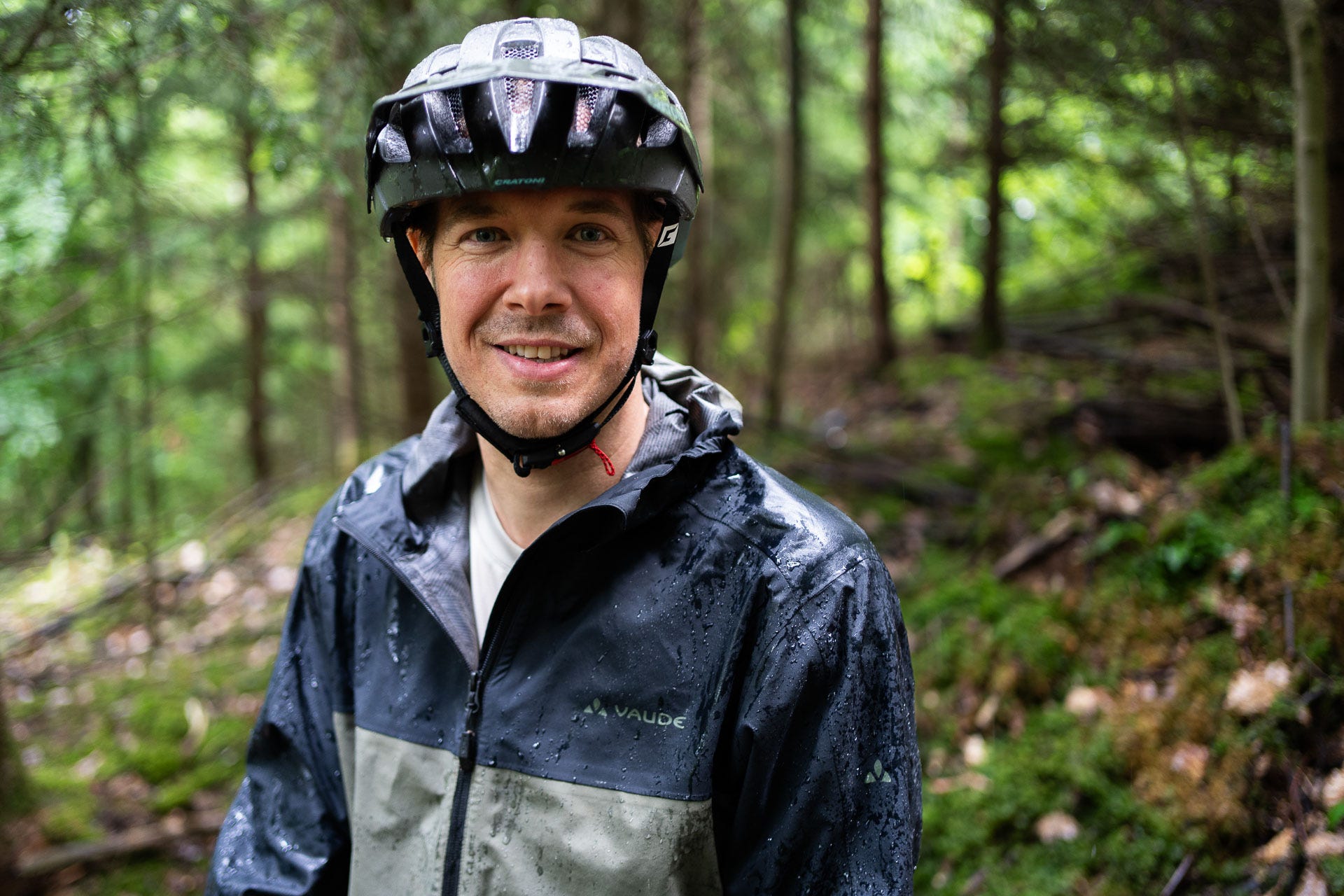

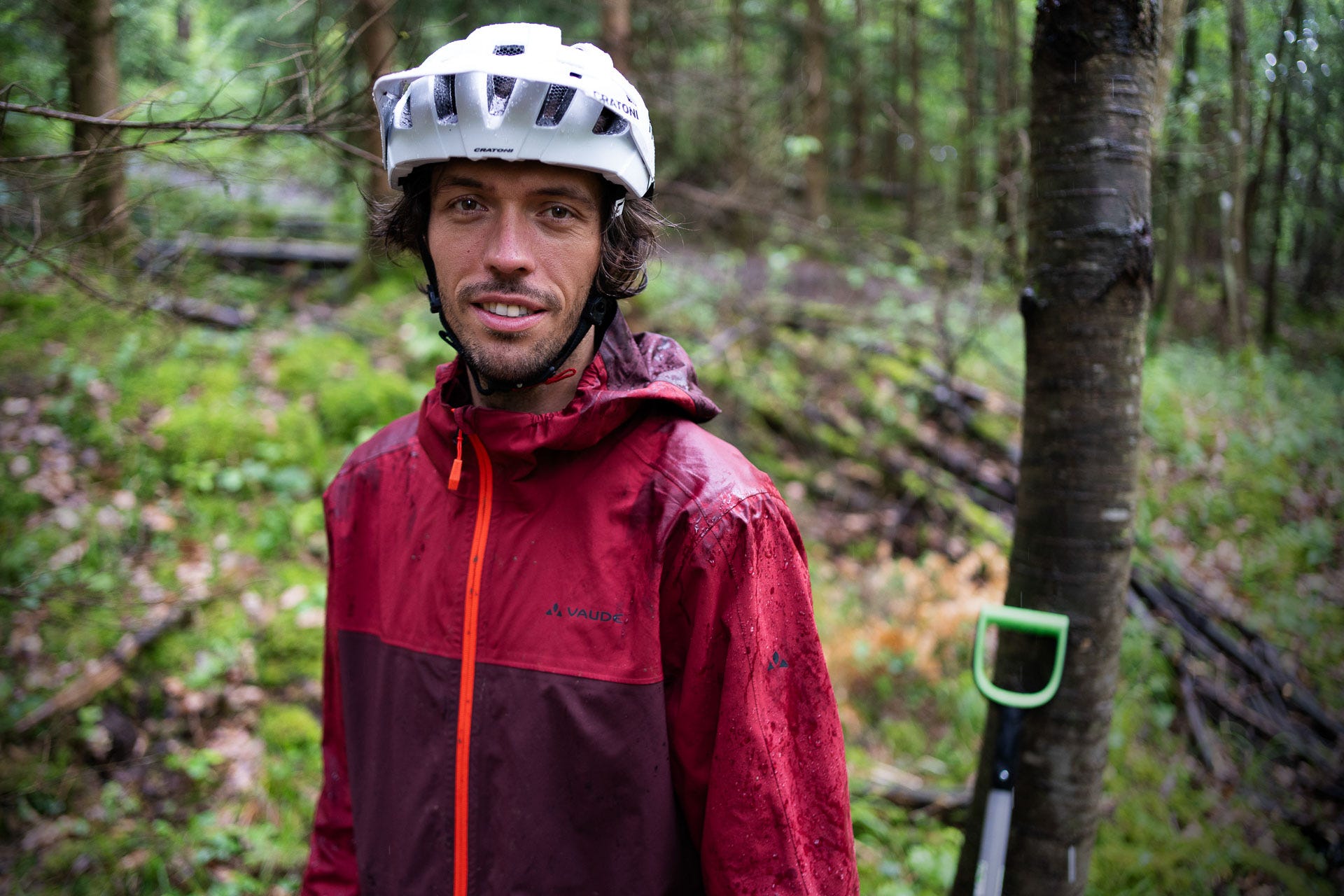

On a control ride with trail sponsors
Three VAUDE employees have heard enough - they go on a check ride with Lars, Chris, Markus and Jochen, a sponsor of three trails. The rain is dripping on the bright green leaves and helmets, the gravel crunches under the studded tires. Lars pulls a rake, shovel and other tools along in a bicycle trailer.


During the uphill, he points to a trail exit. "The other day, mountain bikers rode out onto the trail too fast. We have to build in bends to slow them down and make the exit run parallel to the forest trail for longer."
Other safety aspects also play a major role in trail maintenance. In some cases, for example, the trails should be clearly demarcated from the hiking trail; signs indicate to hikers that mountain bikers are leaving.
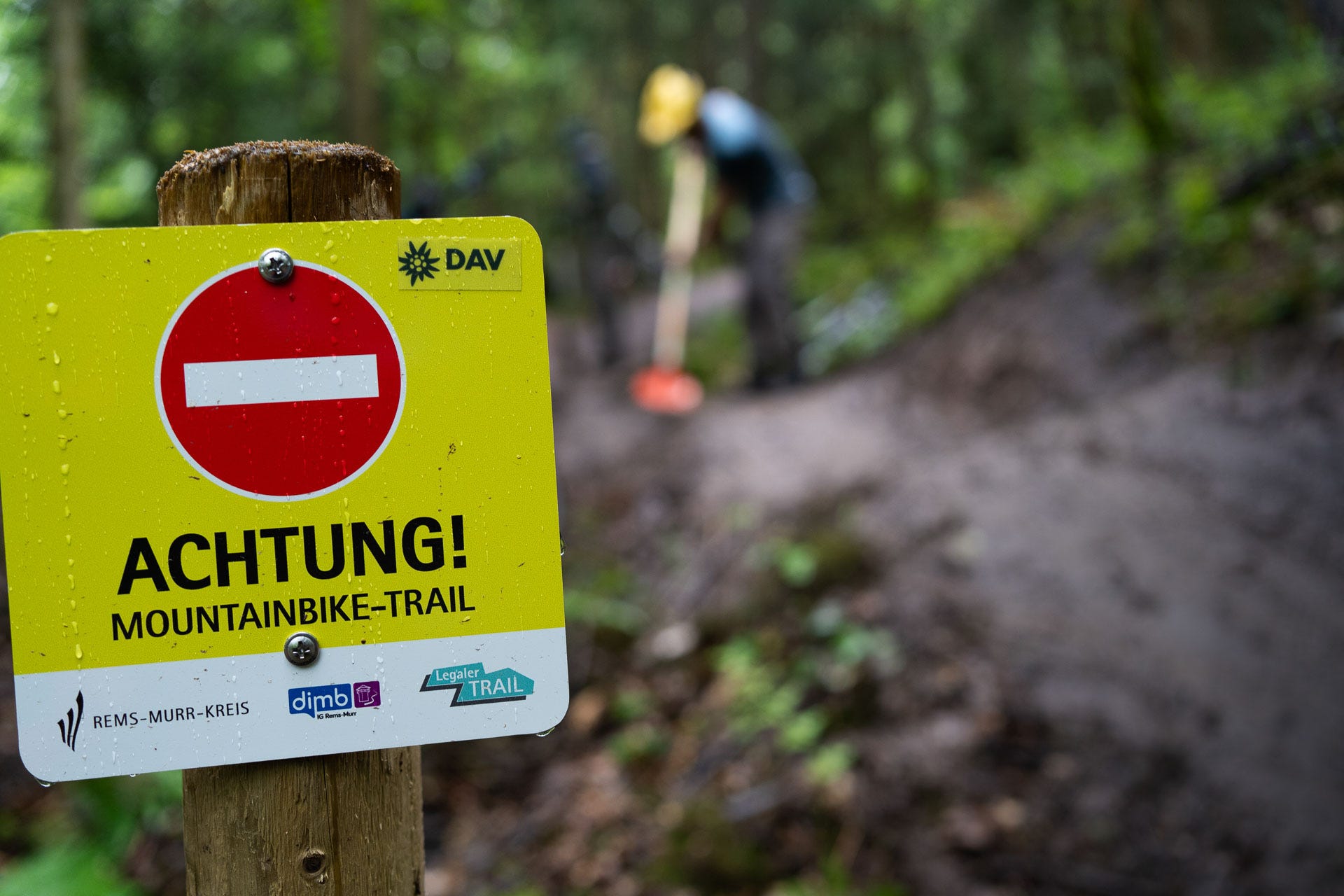

Nature-friendly on the MTB trail
The rain raises a question for us: What about trail etiquette or even bans? After all, riding on wet trails promotes their erosion; they are worn out faster and roots come to the surface. This particularly affects new trails. " The DIMB trail rules are posted at every trail entrance," answers Lars. "We only close the trails if there's no other way."
He prefers tofocus on raising awareness: "When I give children and adults riding technique training, I always explain that you should only ride trails in the rain that can withstand it and that you should make the path wider if you ride around puddles." He also points out the current conditions on Instagram, for example.
While we're talking, we've already arrived at the trail entrance. We can already see puddles from here. We roll down accordingly slowly. Lars parks the trailer, we park the bikes and shovel ditches together so that the water drains into the forest.
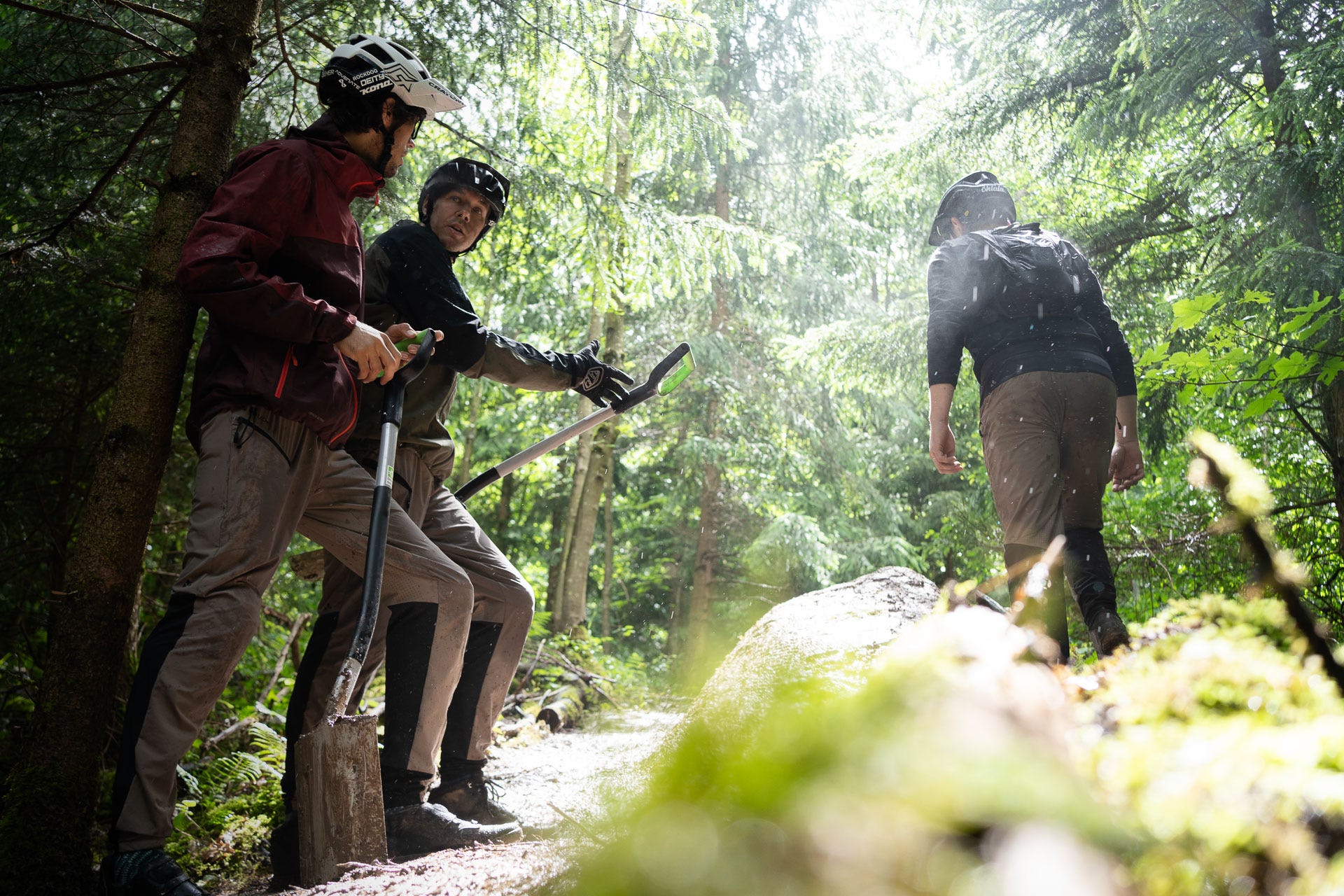

Mountain bikers meet hunters
After work comes pleasure! The godparents take us to another trail. Bend after bend, it swings us through the forest, a rock offers three alternative routes. Markus lets the rear wheel fly into the air and rides down the rock on the front wheel; VAUDE employee Nathanael drops from the rock onto the trail - what fun!
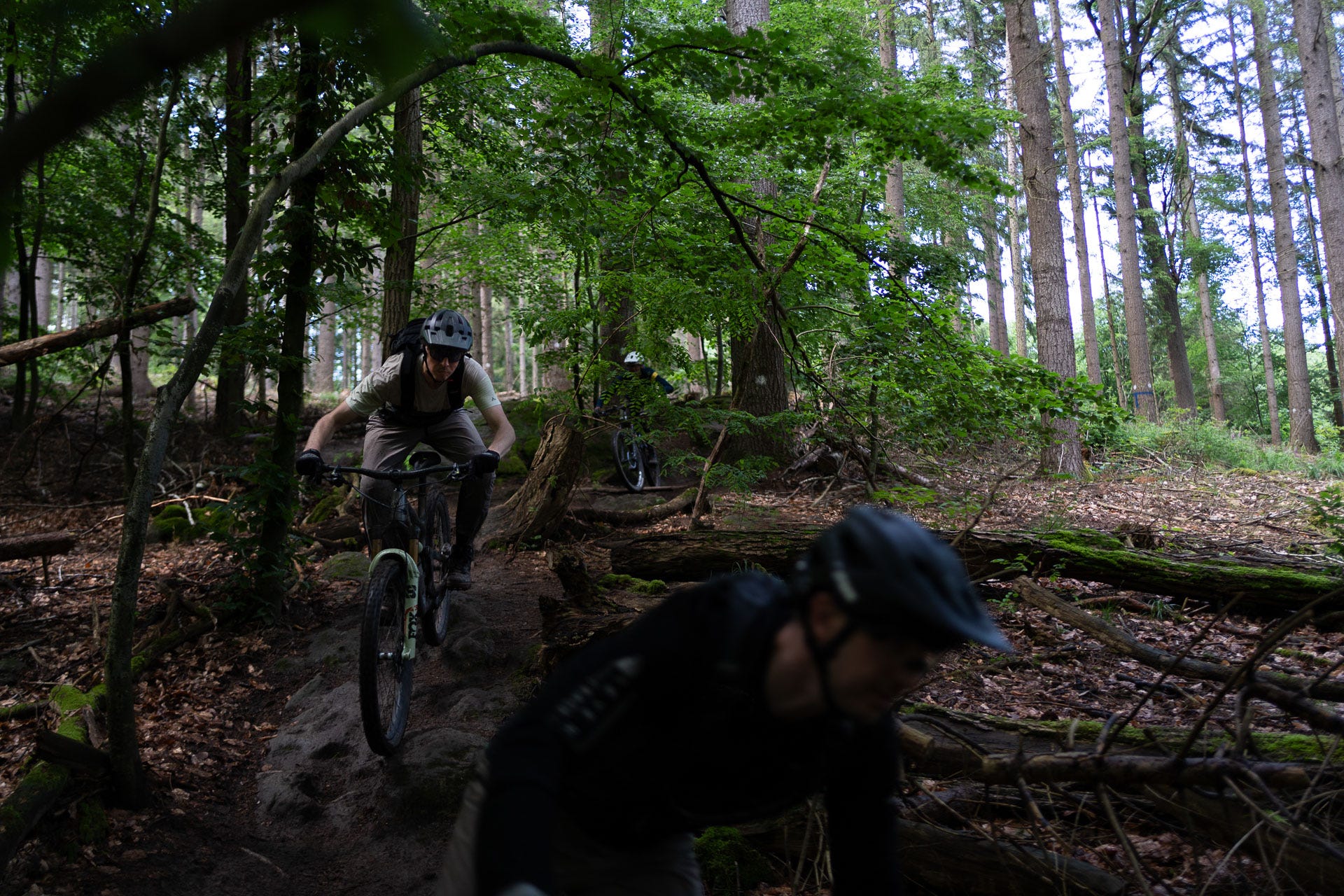

Finally, the trail spits us back onto the gravel path. A man in wellies, jeans and an orange jacket is standing there. It's the hunter that Lars speaks to straight away. "It's important that the wild animals are left alone at night," says the hunter.
"Otherwise, I'm happy about the trails. I use them myself to get through the forest quietly." Otherwise, he has to create stalking trails himself and keep them clear of branches, grass and leaves. Lars is obviously right: if you talk to people in a friendly and unbiased way, you often find unexpected allies.
You can also listen to the VAUDE podcast episode with Nico Graaff from the Mountain Bike Tourism Forum Germany on the subject of legal trails for mountain bikers:

